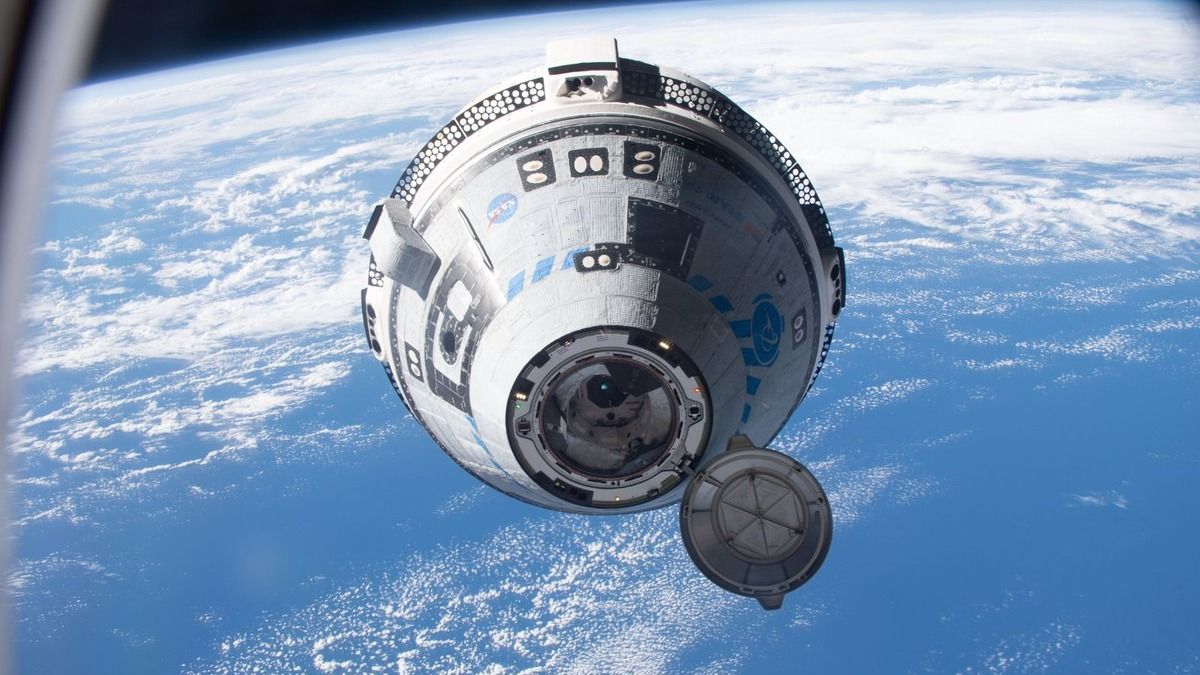Boeing says it may sign up private astronauts for future Starliner missions, but the focus is on NASA for now.
The company is largely focused on flying NASA's first Starliner mission with astronauts on board, spacecraft program manager Mark Nappi told reporters Thursday (April 25). This mission, the Crew Flight Test (CFT), will see NASA astronauts Butch Wilmore and Sonny Williams launched into space aboard a United Launch Alliance Atlas V rocket no later than May 6.
“He. She [CFT] “That's really all our attention at this point,” Nappi said during a conference call from the launch area at NASA's Kennedy Space Center near Orlando. Next, Boeing will make sure it has enough spacecraft manufactured for future NASA astronaut flights, which are expected to be six or seven.
He added that private flights are a possibility, but are not a concern at the moment since they are building NASA's flights through the potential retirement of the International Space Station in 2030. “We have plenty of time to think about what happens next,” Nappi added.
Related: I have flown the Boeing Starliner spacecraft in 4 different simulators. This is what I learned (video, photos)
Boeing's decision contrasts with the other private company sending astronauts to the International Space Station: SpaceX.
Three years after the space shuttle was retired in 2011, SpaceX and Boeing both received contracts from NASA to fly commercial crew missions to the International Space Station. As of 2014, when the contracts were announced, Boeing's commercial crew contract for the Starliner was worth $4.2 billion, compared to SpaceX's $2.6 billion.
SpaceX sent its first test mission to the International Space Station in 2020, and has made 11 other spaceflights to the complex since then: eight semi-annual missions for NASA, and three roughly two-week missions for the private astronaut company Axiom Space.
Axiom is actually just one private entity that uses SpaceX's Crew Dragon spacecraft. In 2021, for example, Shift4 billionaire and private pilot Jared Isaacman flew into Earth orbit with three civilians on a mission known as Inspiration4. Isaacman subsequently purchased three more Crew Dragon missions for a special three-mission series known as the Polaris Program. The first of the trio, Polaris Dawn, could fly with Isaacman and three others as soon as this year, and will feature the first commercial spacecraft.
Despite all these special missions flown with SpaceX, Boeing officials said they are struggling to find a business case for private astronaut missions because the market is still very small and uncertain. Private astronaut missions “are not at the maturity level where I can include them in any kind of business case and say yeah, this is something that will kind of get us over the hump,” said John Shannon, NASA's vice president of exploration systems. , He told the Washington Post in October.
Aside from that, several technical problems with the Starliner since 2019 have forced Boeing to absorb $1.4 billion in unexpected costs.
Starliner problems delayed the CFT by four years. The first unmanned flight of a spacecraft to the International Space Station in 2019 failed to reach its destination. After dozens of repairs, a second test flight without astronauts docked safely with the ISS in 2022. The CFT was delayed further in 2023 after critical problems were discovered with the parachutes, along with the spacecraft's flammable P213 tape.
Steve Stich, director of NASA's Commercial Crew Program, told reporters during the same conference call on Thursday that he was impressed with the systemic fixes Boeing has provided for these issues.
“The entire NASA, Boeing, United Launch Alliance team and all contractors have done a tremendous job overcoming countless issues to achieve certification, getting to this point today,” Stitch said.
Wilmore and Williams, both former US Navy test pilots, arrived at KSC yesterday to continue quarantine and prepare for the CFT launch. They aim to conduct a comprehensive check of the spacecraft and all systems, including a large manual flyby and test emergency procedures such as turning on the solar panels, to help certify the Starliner for six-month missions.
If the CFT flight goes as planned, the first operational mission (Starliner-1) will fly in early 2025 at the earliest, for six months. This crew includes Mike Finke of NASA, Scott Tingle of NASA, and Joshua Kutric of the Canadian Space Agency.

“Typical beer advocate. Future teen idol. Unapologetic tv practitioner. Music trailblazer.”








More Stories
Boeing May Not Be Able to Operate Starliner Before Space Station Is Destroyed
How did black holes get so big and so fast? The answer lies in the darkness
UNC student to become youngest woman to cross space on Blue Origin